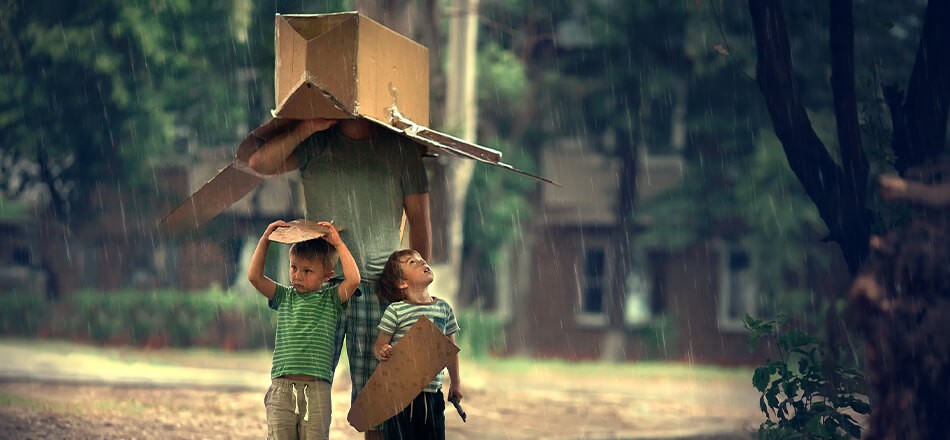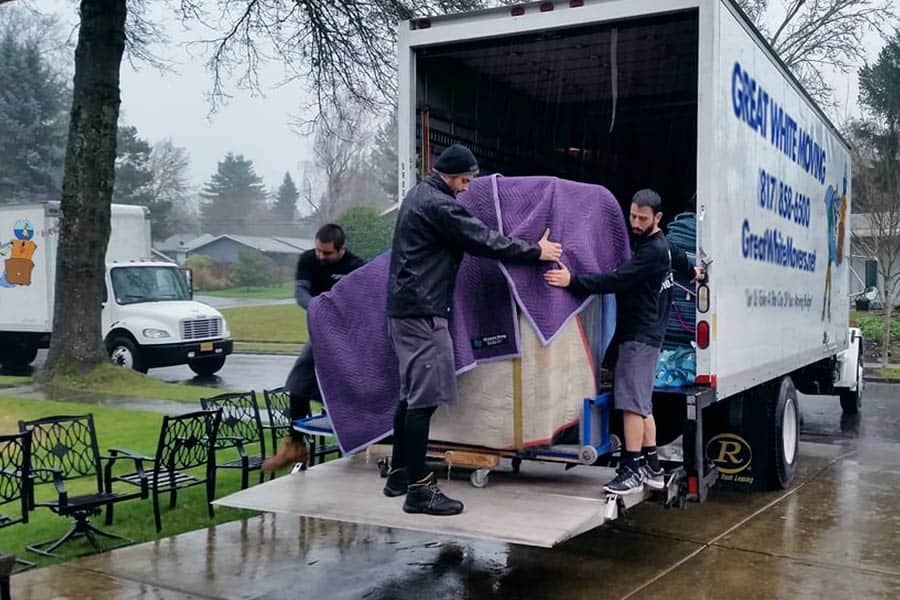Preparing for a move can be stressful. There are so many moving components to figure out, and even if you do everything right (booking a reliable moving company, packing, calling the move months in advance), inclement weather is always possible.
Unfortunately, bad weather can happen at any time. While you can never plan for the weather conditions, you can employ a few strategies to protect your belongings and make moving easier.
Monitor the Weather Forecast
From sudden summer showers to unexpected winter storms, there is only so much you can predict regarding local forecasts. In other words, your first order of business is to prepare for what may happen that day.
If you are moving in the summer, consider heat and humidity. If you are moving in late fall or winter, you must plan for rough, cold weather.
Discussing what conditions the movers can (and cannot) carry your belongings and a backup date in case the weather makes the move impossible is a good idea.
Also, don’t forget to call your power company to arrange a date and time to set up electricity and heating/cooling in your new home. Running the air conditioning and heating a day or two before moving will save you from headaches (and cold hands and feet) later.
Protect Your Belongings
Protecting your belongings from water damage is one of the top priorities when packing. After all, arriving at your new home with ruined electronics will inevitably ruin your day.
To protect your belongings, you should:
- Pack small electronics, cords, and cables in sealable, waterproof plastic bags before packing them in boxes.
- Large electronics, such as toaster ovens and televisions, should be professionally packed and packaged a moving company.
- Pack as many items as possible (especially papers) in plastic waterproof bins. Water can easily penetrate cardboard boxes and ruin books, photos, pillows, etc.
- Wrap wooden furniture, appliances, artwork, mirrors, etc., in heavy plastic wrap, thick towels, blankets, etc.
- Shrink-wrap clothing and other items before packing them. Not only will this protect your goods from water damage, but it will also save space.
Prepare the Pathways
If you don’t know what to expect on a moving day, be prepared for a few accidents. No matter how ready you are, a few things can always go wrong. Preventing physical accidents like slips and falls will help minimise the long-term damage caused these inevitable incidents.
To prevent slips and falls, ensure both properties and surrounding outdoor surfaces are free of debris, snow, and ice. Place rug runners or carpet masks on walkways and stairways. This will help keep the new space clean.
Secure Outdoor Items
Apart from clearing any type of debris, snow, and ice from the outdoor areas, getting familiar with the terrain before the move is always a good idea.
Knowing where to step and navigate the move will reduce the chance of injuries due to low visibility in bad weather.
Leave pointers to know where to step and which areas to avoid.
Dress Appropriately
Moving in inclement weather is not a pleasant experience. To reduce discomfort and prevent mishaps, ensure you have the proper equipment for yourself and those who will be helping you.
You never know when bad weather will strike during the different seasons, so it’s best to dress accordingly.
If it rains, put on your rain boots and a raincoat. Clothing that repels water and keeps you dry is a good idea. It’s often not extremely cold, and you can stay warm as long as you can keep out the water. Wearing rain gear can protect you from the wind.
If the weather is snowy, ensure adequate warmth and traction shoes. Wearing warm gloves and a hat will increase your stamina on a moving day. Gloves can also help you get a better grip as you carry your belongings from the truck to the house (and vice versa).
If you are unlucky enough to have sleet on the day, wear water-repellent outerwear and plenty of cosy innerwear. Consider sweaters, scarves, and thermals. Dress in layers to stay warm.
Use Proper Equipment
People often use moving blankets to cover boxes and furniture, but these items are not waterproof. Instead of using them, wrap your belongings in moving plastic or stretch wrap to protect them from the rain.
You can use trash bags or tarps for larger items if that is unavailable. However, the boxes will be fine if they are only exposed to rain while transported to the moving truck.

Take Breaks and Stay Hydrated
Moving in bad weather is hard, so you must take more breaks than usual. Don’t try to do it all at once, but instead, be careful and preserve your strength.
If you tire yourself out, the risk of slips and falls increases, which could end the entire move.
Due to the greater difficulty, we tend to strain our body more when moving in bad weather, so ensure that you stay hydrated throughout the entire move.
Ensure Adequate Lighting
Bad weather is associated with lower visibility. Even if you start nice and early, the duration of the move will significantly increase due to the inability to move around freely.
You must also consider that the traffic will be worse on such days, so there is a high chance you arrive at your place when it’s dark outside.
To make up for this, ensure that you have running electricity at your new home and lighting outside the property that will help you navigate when unloading. Carry strong flashlights with you to lighten areas that aren’t well-lit.
Safety First
In addition to taking care of your furniture and moving items, moving in the rain can also threaten your safety.
So if you are changing homes in such conditions, take extra precautions to avoid accidents such as slipping while carrying heavy items. You can prevent this placing tarps, unfolded cardboard, or old mats on the path from your house to the truck.
You can also improve efficiency placing people in designated areas, such as two people to carry the load from inside the house to the front door and two people to load that load onto the truck. This way, less rain will enter the house.
If you are not confident about your move, contact a professional removals company. They will be able to assist you with packing, loading, and unloading all your belongings, keeping you protected from the weather.
Conclusion
Preparing for a move takes work. It gets significantly harder when you have to consider the weather conditions.
While you can not avoid a rough climate, you can keep track of the weather reports and prepare for the day of your move. Getting yourself additional equipment to keep your belongings safe and dry during the move is vital to its success.
Don’t hesitate to contact a removals company even on short notice, as they are experienced and can significantly reduce the stress and risk associated with the move.
If you still decide to take the DIY way, ensure sufficient lighting, dry and warm clothes, and take regular breaks.

